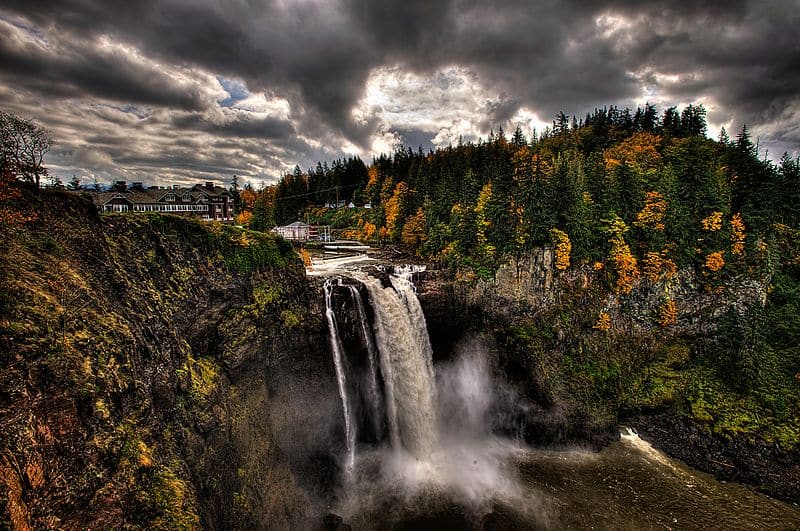
Snoqualmie Falls Facts
- Firstly, the gorgeous Snoqualmie Falls remains a natural masterpiece. The site also easily qualifies as one of those marvelous works of Nature that few people know the name of, outside its local region.
- However, within the country it formed in, it remains an extremely popular tourist site. Due to this fact, more than 1.5 million tourists visit the truly magnificent location annually.
- Yet, while few may know its name, many have seen images of it. This holds true because the location gained a measure of international notoriety in 1990. Producers used it as a backdrop in the cult classic TV series, Twin Peaks.
- Finally, officials named this stunning waterfall to the National Register of Historical Places, in 2009. This occurred due to its importance in the beliefs of the local Native American Snoqualmie Indian Tribe.
Related Articles
Snoqualmie Falls Physical Description
Most notably, the breathtaking Snoqualmie Falls has an average plunge of roughly 268 ft (82 m). Further, the marvelous site sits at an elevation of approximately 395 ft (120.4 m).
Sadly, much of the river is diverted for hydroelectric generation, yet enough flows over the falls to create an incredible sight. The plunging water generates an almost continuous, and rather impressive, quantity of spray.
The width of the waterfall, however, varies somewhat significantly. This occurs due to the occasional influx of locally heavy rainfall, or melting snow in the region.
In addition, the waterfall presents a small, lesser-known feature. This is located just to one side, as seen in the picture here. A small opening at the base of the rocks, off to one side, pours forth a small, second flow of water.
Snoqualmie Falls Location and Importance
Firstly, the mesmerizing Snoqualmie Falls formed in what is now the northwestern part of the continental United States, in North America. Further, it sits about 25 mi (40 km) from the city of Seattle, Washington.
For centuries, the site played a rather pivotal role in the lives and beliefs of the Snoqualmie Indians. Due to this, the location formed the site of a sacred burial ground, and was central to their religious beliefs and culture.
But, in 1899, a power plant was built 270 ft (82 m) underground, that operated at the base of the falls. That power is still in operation today. Furthermore, it represented the first entirely underground power plant ever built.
In addition, the site now serves as the centerpiece of a large, beautiful National Park. Hiking in the region also serves as a popular pastime for many. Yet, despite the constant flow of people, many animals still call the area home.
Features Sharing Its Region
Check out our other articles on 10 Remarkable Rare Cetaceans, Korean Fir, Australian Ghost Shark, Titan Beetle, Pink Fairy Armadillo, Wallace’s Flying Frog, Little Auk, Tiger Rattlesnake
